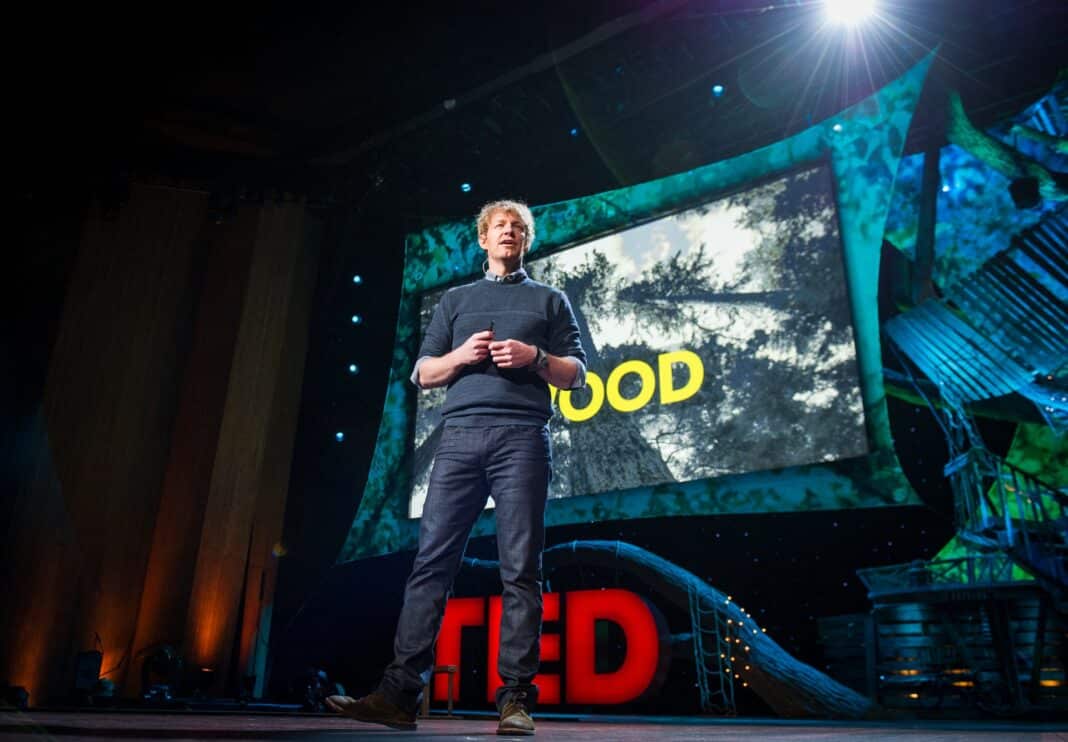“No building will be truly sustainable until the industry moves away from the three big carbon generators – concrete, steel and masonry,” according to leading Canadian architect Michael Green.
In an interview with the Canadian publication Northern Ontario, Mr Green said, “We left the industrial age, and the materials of the industrial age are the dinosaurs of architecture.”
It comes as Mr Green spoke at a recent webinar by New York-based Architizer, “The current trend in building is not going to work, and we need to find a completely new way of doing it.”
In March, Wood Central reported that Mr Green argued that modernist architects’ reliance on steel, glass, and concrete is now obsolete.
“In the design-build world, the term ‘sustainable’ has become almost mythical as architects and builders search for construction techniques that ease the burden on the environment.”
“But no building will be truly sustainable until the industry moves away from the three big carbon generators – concrete, steel and masonry – and toward new materials that align with nature.”
Mr Green believes the way forward is using new, bio-based building materials such as grass, hemp and lime, mycelium and bamboo, hybrid bamboo, mycelium and kelp, soil and seed – and that’s the concept behind his newest venture, FIVE.
“It’s the idea of what could be the fifth material that could compete with the big four?” Mr Green said. “And what could be the biobased solution?”
Trees or any vascular plant are composed of cellulose fibres bound together with lignified tissues, giving plants a strength that enables them to carry big loads.
He says although forms in nature are circular, humans cut wood into rectilinear forms because it’s cheap and efficient.
But that means current construction practices lead to a staggering quantity of waste.
“It’s the kind of scale of waste that means we’re using more of the world’s resources in incredibly wasteful ways, which means more energy goes into it and more carbon.”
“Our goal is to figure out how we create a structure that models itself more like nature to create less waste than a traditional box-like structure that you would see on steel, concrete or wood?”
Mr Green proposes a combination of plant-based fibres, structural modelling, and robotic forming to create buildings closer to how nature builds.
“We’re trying to follow the essence of what the structure needs and no more, which is exactly what nature does,” he said.
Builders could source different plant materials, including flax, hemp, bamboo, or sweetgrass, depending on the region.
“The material could even be taken from what are typically considered waste sources”. It could include wood gathered from the forest floor, wood products, or agricultural plant waste.
The plant fibre can then be broken down and reconstituted into a kind of cross-laminated timber, which can be used in a construction similar to the way that’s done with wood now.
In China, researchers are looking to integrate locally produced bamboo into the product’s manufacture, making it cheaper than conventional construction materials.
In late 2022, Chinese researchers published new research concluding that Cross-Laminated Bamboo and Timber (CLBT) – a timber and bamboo composite could successfully bind with further research on commercialising CLBT-engineered panels.
Though research is ongoing into these materials, Mr Green said a prototype was unavailable for testing, primarily because it was difficult for researchers to get their product to market.
He has nonetheless called on the design community to take a leadership role in pushing for change, as the need for more construction was only set to increase in the coming years.
“We as a community should take ownership of the notion that we have a voice, agency and that we are leaders, and encourage each other to speak up.”
“Because the world needs to understand what we’re trying to do, and the world needs to invest in us as part of that process.”






